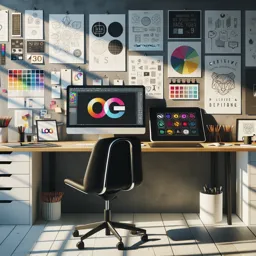Introduction to Typographic Hierarchy
Typography is an essential element in graphic design, acting as a bridge between visual appeal and the readability of content. Within typography, hierarchy refers to the organization of type that guides the reader through information according to order of importance. Mastering typographic hierarchy enables designers to create layouts that are not only beautiful but also communicate ideas with clarity and effectiveness.
What is Typographic Hierarchy?
Typographic hierarchy is the method by which designers control how bodies of text are perceived by readers. It involves differentiating elements using various typographic techniques—including size, weight, color, spacing, and style—to emphasize certain pieces of information over others.
Establishing an Effective Hierarchy
- Font Size: Larger fonts command more attention and are usually reserved for headlines. Subheadings and body text successively decrease in size.
- Font Weight and Style: Bold, italic, and light weights help distinguish different levels of information.
- Color and Contrast: Use color thoughtfully to highlight important information or to create visual separation between sections.
- Spacing: Line spacing (leading), letter spacing (tracking), and margins can draw attention to or group related textual content.
- Typefaces: Combining different, yet complementary, typefaces can add visual interest and support hierarchy.
Practical Application in Graphic Design
Whether designing for print or digital mediums, a strong hierarchical structure ensures content is scanned efficiently and key messages are not lost. For example, a menu design might use bold headers for sections, italics for descriptions, and different font sizes for dish names and prices. Similarly, in web and app interfaces, hierarchy improves navigation and user experience.
Common Mistakes and How to Avoid Them
- Overusing Styles: Limit the number of typefaces and styles to maintain consistency and avoid overwhelming the viewer.
- Ignoring Readability: Decorative typefaces can be eye-catching but may sacrifice legibility. Always prioritize clarity.
- Poor Contrast: Ensure text stands out against backgrounds for easy reading.
Conclusion
Understanding and applying typographic hierarchy is a crucial skill for designers at any level. It improves the communication of information and enhances the overall aesthetic of any design project. By experimenting with size, weight, color, and spatial relationships, you can create compelling graphics that effectively guide the reader’s eye through your message.

































